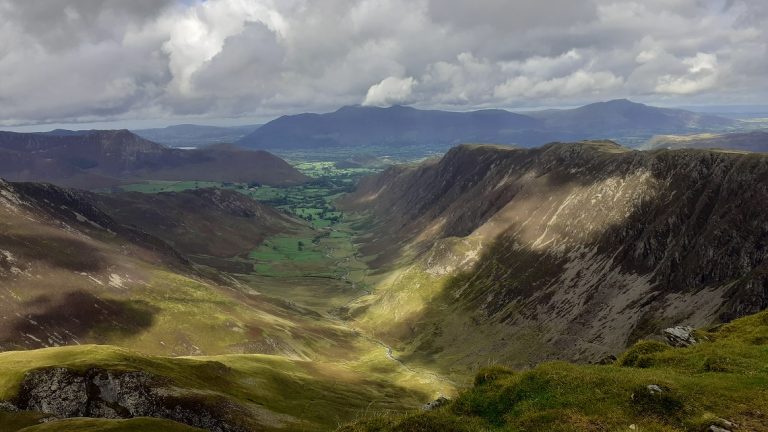WRIGHTS OF PASSAGE
Is it possible to BIKEPACK the Lake District’s WAINWRIGHTS — all 214 of them, in one CONTINUOUS round? There’s only one way to find out…
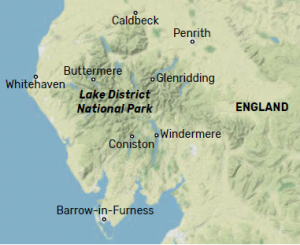 The view was simply breathtaking. I was standing on the summit of Helvellyn in the Lake District National Park, 950m above sea level staring out over the sun-kissed mountain tops of the Eastern Fells. The sun was beating down mercilessly from a clear blue sky. There was barely any wind to speak of, which would normally be considered excellent conditions, but right then, I’d have welcomed a cool gust of air to wick away the sheen of sweat that coated my body.
The view was simply breathtaking. I was standing on the summit of Helvellyn in the Lake District National Park, 950m above sea level staring out over the sun-kissed mountain tops of the Eastern Fells. The sun was beating down mercilessly from a clear blue sky. There was barely any wind to speak of, which would normally be considered excellent conditions, but right then, I’d have welcomed a cool gust of air to wick away the sheen of sweat that coated my body.
The summit was busy, being a mid-summer’s day, and a buzz of idle chatter surrounded me. Some climbers ate their picnic lunch, some posed for selfies, and others stared at me like I was mad. The main difference that set me apart on the summit that day was that I’d hiked up the same back-breaking ascent of Dollywaggon Pike as everyone else — a steep and tortuous trek up a long stone staircase — with the addition of a fully-loaded mountain bike on my back.
BREAKING FREE
This was day one of my Wainwrights bikepacking expedition. My aim was to become the first person to bikepack and summit all 214 Wainwrights —those listed in Alfred Wainwright’s seven-volume Pictorial Guide to the Lakeland Fells (1955-66) in one continuous loop. Bikepacking enabled me to be totally self-sufficient with all my camping and cooking gear strapped to the bike. I estimated the trip would take just over a month and cover approximately 550miles.
I had been furloughed from work. The pandemic had restricted my liberties like it had for everyone, and so in a gap between the lockdowns, I broke free. At that moment, I craved the liberating challenge of an adventure — I needed it! If every day was going to be as beautiful as this one, I was in for a treat. If only…
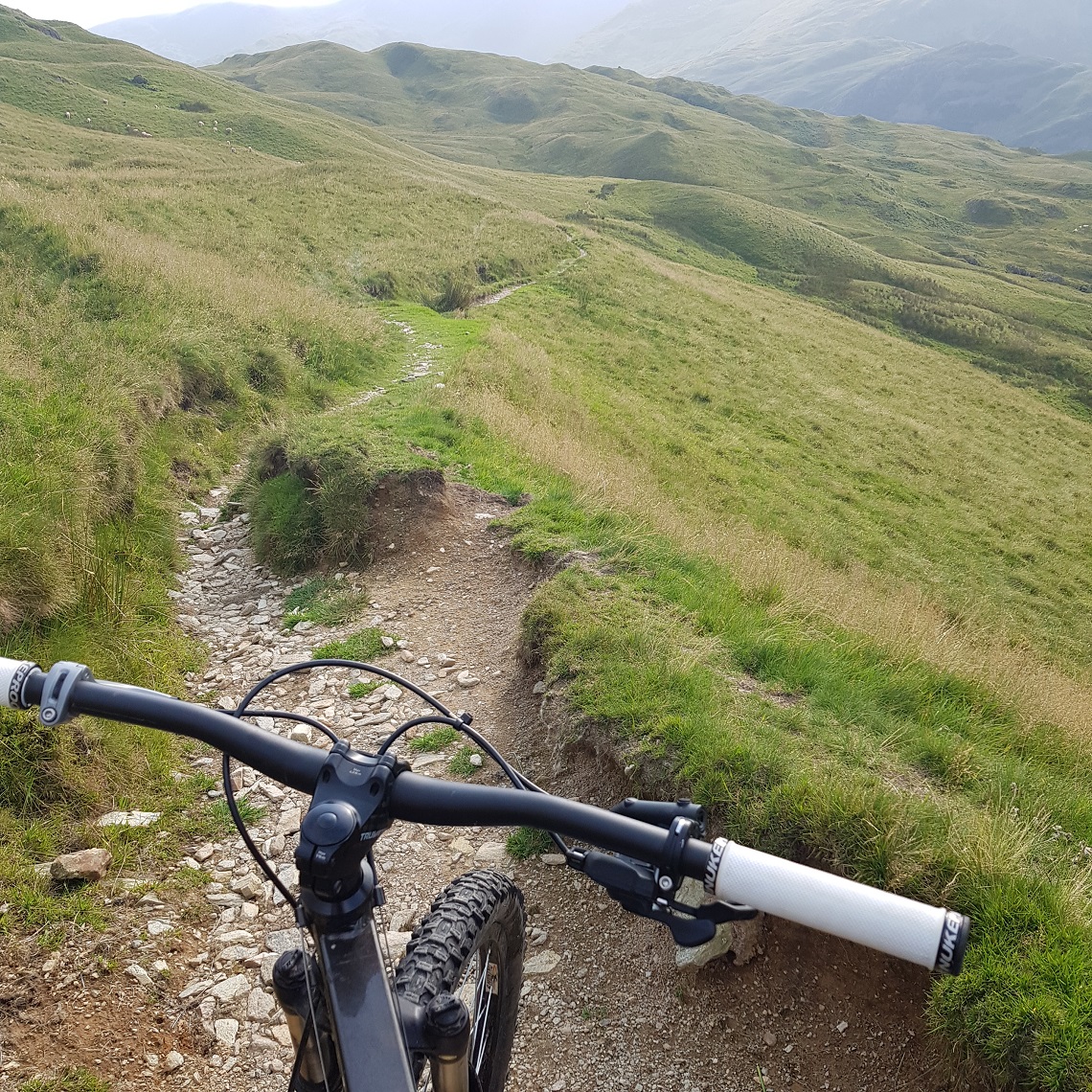
I was attempting this challenge solo. I’ve always been fascinated by the conundrum posed by solo adventures; on one hand you have the singular moments of sorrow or joy experienced only by yourself to be treasured for the rest of your life, and on the other, you have the physical and mental wounds you suffer alone, without a shoulder to lean on or a comforting word of support. As is often the case with adventure, the reality perceived can be different from the reality lived. Take the first week, for example. It all started so promisingly. I began at Glenridding and steadily worked my way through the Eastern and Far Eastern Fells with the aim of being at Ambleside a week later.
For the first week, I was cycling in an unseasonal heatwave, so every day I had clear blue skies, dazzlingly bright sunshine, and high temperatures. The biking on the high fells was fantastic. I couldn’t have asked to be dealt a better hand and I’d rarely seen the Lakeland fells so clearly. I was afforded views of all the mountain ranges, seeing almost the full vista of the Lake District National Park in all its glory.
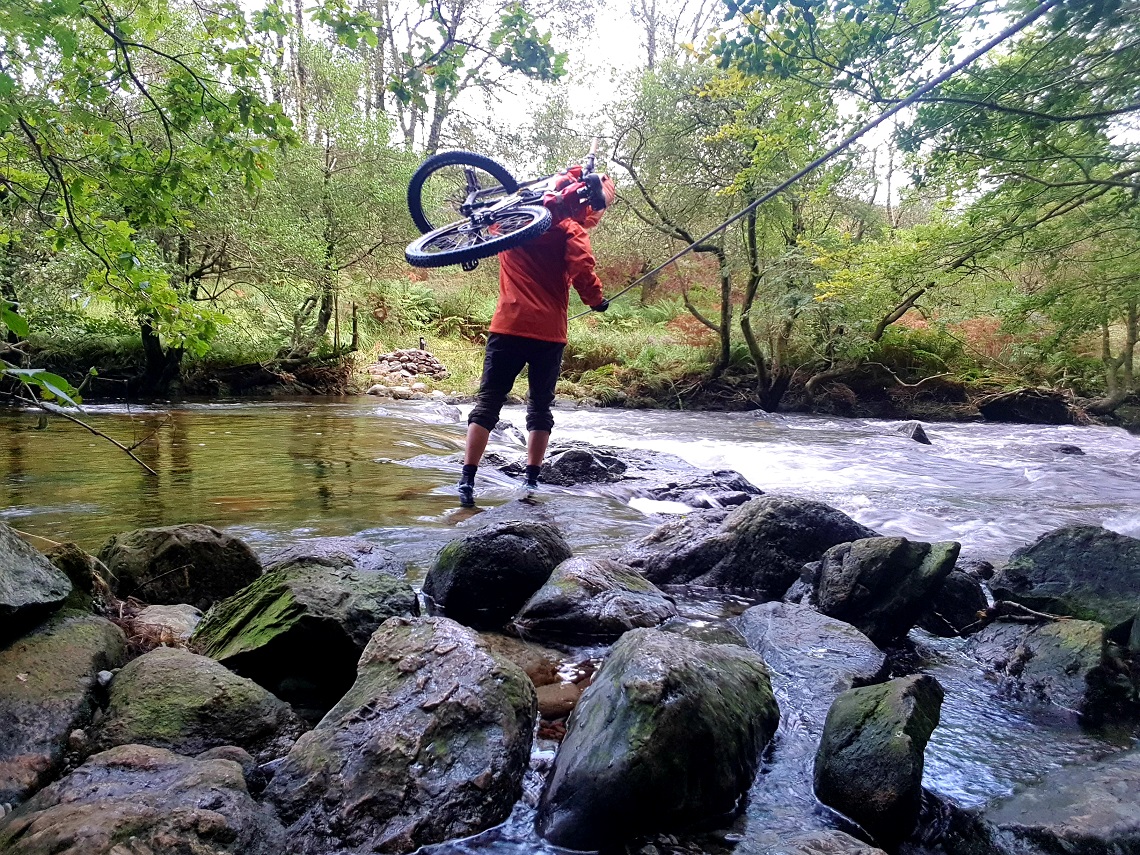
Except after a week of relentless sunshine, scorching temperatures, and little shade, the physical toll of travelling in those hot conditions was dawning on me. I faced an almost daily struggle to find reliable water sources on the trail. It became necessary to make diversions — sometimes over long distances — to fill up at a spring or river, adding yet more mileage and more ascent to my planned route. On a long-distance trip of this nature, every mile counts and any diversions from the planned route were judged carefully on a case-by-case basis, weighing the relative pros and cons to ensure I minimised distance and ascent as much as possible.
HARD DAY’S BIKE
My days were long. I’d wake up with the sunrise and have breakfast over the gas stove. In those first few days, every dawn would be heralded by a cloud inversion. I’d gaze out over a landscape of lonely mountain tops poking out of a seemingly impermeable layer of white fluffy cloud; each summit forming an island in the mist with no sign of the valley below.
After breakfast, I’d sit down with a map and plot out the day’s route. After rechecking the conditions and locations, I’d load up the panniers and break camp to see what the day had in store for me. During the ascents, I’d either push my bike or carry it on my back depending on the gradient of the terrain. For the downhills, I’d ride when it was safe to. Safety was my number one priority over speed. Making the trip alone on a bike made the risk of serious injury much higher than if I were walking, so I took no chances.
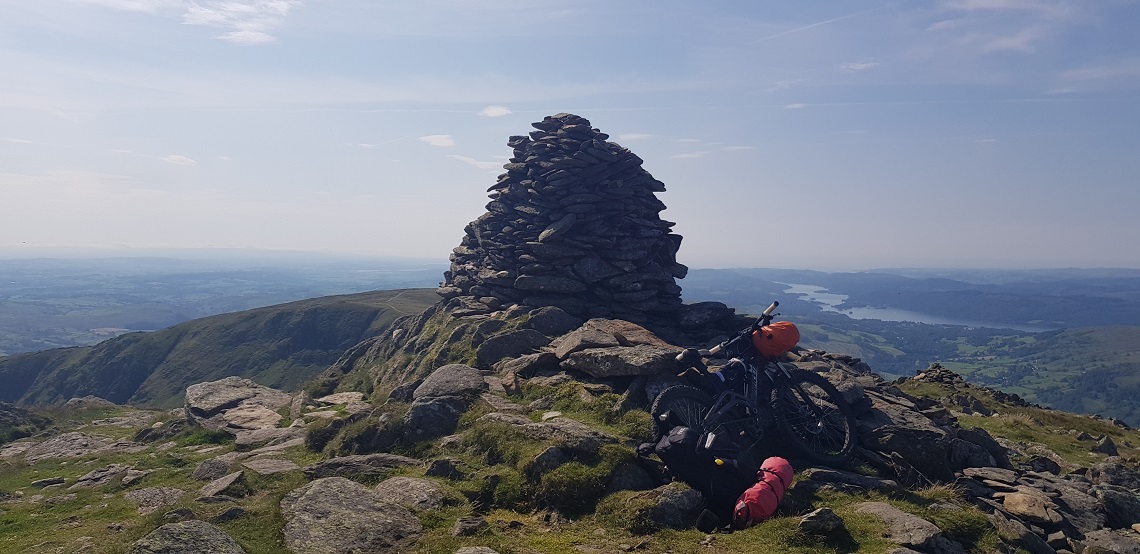
At every summit, I’d record a picture as a personal memento. While I didn’t rush, I set distances every day that I wanted to achieve. Every day that I failed to meet my target could make my life harder further down the line. The same applied to route planning; while missing certain peaks in favour of easier ones was appealing, it could cause me other complications and mean I’d use up more energy later in the trip.
Upon reaching my destination for the day, I’d pitch camp somewhere sheltered and out of sight, following all ethical rules on wild camping. By the time I’d finished for the day, I’d be weather-beaten and bone-achingly tired. After eating some food, I’d scribble my thoughts in the diary before sinking into a deep sleep, ready for the next day’s challenges…
Or at least that was my hope. As it transpired, the weather changed dramatically after the first week. What followed were endless days of torrential rain and periodic thunderstorms, bringing their own unique set of problems to an otherwise grim picture.
While watching the thunderstorms roll over distant peaks was both dramatic to see and interesting to watch, the very real threat of being struck by lightning was not lost on me. I was wild camping every night and the exposed metal of my bike and tent poles gave me a healthy level of fear about those thunderstorms. I always aimed to camp low and in a sheltered spot, never high up on the mountains.
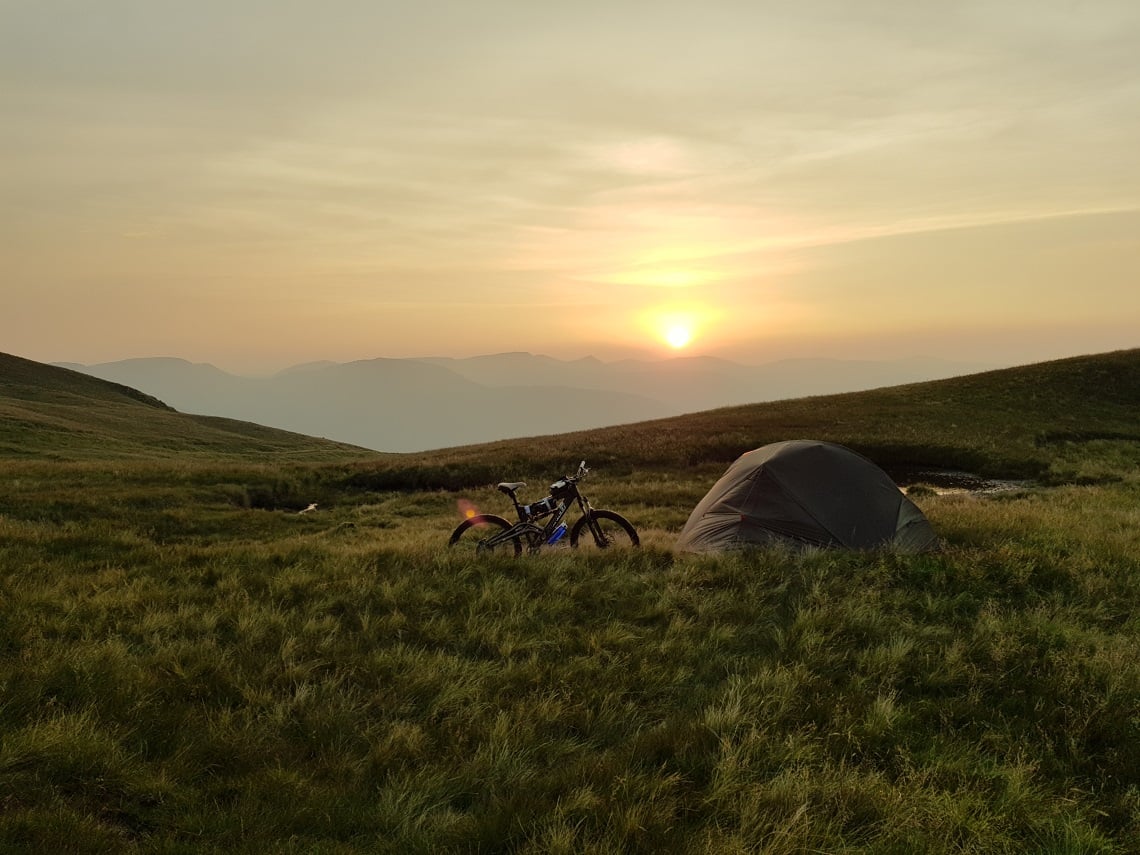
The storms seemed to be worst at night. The wind would reach high speeds and unless I sheltered my tent properly, I ran the real risk of my tent poles breaking or the fabric of my tent tearing from the force. On a few too many occasions, I heard the ominous ripping sound of the guide ropes flexing against the tent pegs while I tried to sleep. It took the first two weeks for me to sink into a rhythm, but then the weather did its singular best to disrupt any sense of routine I’d developed. For days on end, I’d stoically stick to my proposed plan, but the routes often took me over very exposed mountain tops in often wet and windy conditions.
On those isolated lonely plateaus, the prolonged silences started to play on my mind. Having no one to confer with became difficult. I’d spend hours listening to the internal dialogue going on in my brain, questioning whether I’d done the right thing, overanalysing decisions made days ago. They were really tough days.
On one occasion, I’d summited the Old Man of Coniston, an imposing 803m peak in the South Lakes, having spent the entire day biking through wet and wild conditions. The cloud layer was so low I had no visibility at the top, so I didn’t even have the views to lift my dwindling spirits. I was cold, soaked to the bone, tired, and low on energy — it was in those moments that chance occurrences played a huge part in keeping my spirits up.
PEAKS AND TROUGHS
These chance occurrences ranged from the sublime (a free can of Coke from passing hikers) to the downright ridiculous (engaging in a lengthy ‘conversation’ with a grouse on the grass-covered slopes of Gavel Fell (526m)). Anything out of the ordinary that broke up the monotony of riding, walking, eating, and sleeping made for a most welcome distraction.
From day 14 to day 28 I summited over 59 fells. This part of the trip was one of the hardest because the weather was generally awful, characterised by strong winds and persistent drizzle. The conditions brought home the knowledge that I was in some of the more isolated fells where civilization is that bit further away. As time dragged on and I got further from villages and people, the sense of isolation worsened any effects the bad weather was having on my already battered morale.
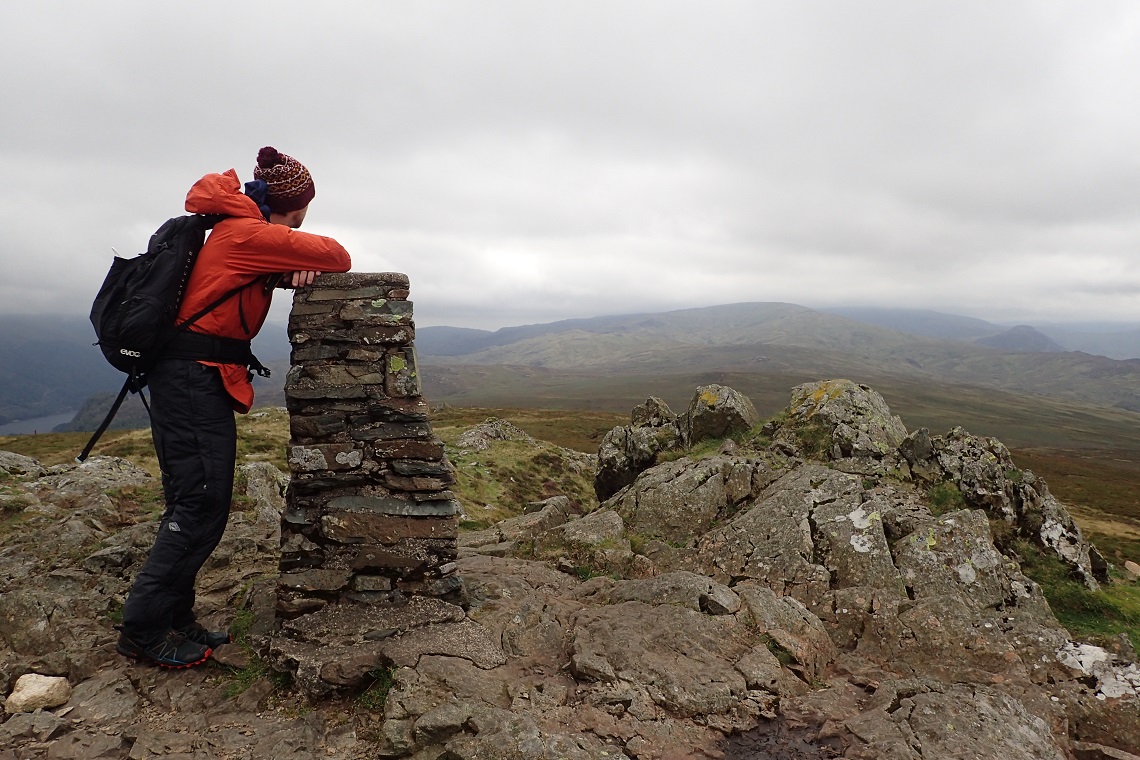
The relentless rain drove me to feeling low and unmotivated. As I was limited on space, I’d packed very few clothes other than those on my back and a few spare pairs of underwear and socks. The endless rain made the trails extremely boggy, and after a few days, I had no dry clothing left save my carefully packaged sleeping gear. Unless you’ve experienced it, it’s hard for me to accurately describe just how miserable it is wearing wet clothes every day, while trying to motivate yourself mentally and physically to carry on.
It was during this time that the physical aspect of my challenge started to take its toll. I’d wake up in the frigid mountain air with cramped muscles. My feet ached and were blistered, the soles covered in a layer of pallid, grey skin that was sore to the touch — the first signs of trench foot owing to the constant damp. My right knee was starting to become painful. Every flex of the joint, especially on the downhills, would cause stabbing pains to shoot up my right leg.
I feared it was tendonitis, the legacy of an old sporting injury. All in all, my body was starting to fail me. Old and new injuries were causing me daily struggles, and pedalling the bike was becoming harder and harder. Walking was no better; the trench foot made each step terribly painful.
I knew I had to stay mentally strong, or the trip would fail. It was the little things that kept me going. A hot cup of tea in a warm, dry pub sitting beside the fire; a rare break in the cloud allowing rays of sunshine to hit my face; a chance encounter with a fellow mountain biker who talked at length about local riding routes. These small everyday occurrences kept me focussed and driven, despite the bone-aching tiredness that was getting worse day by day.
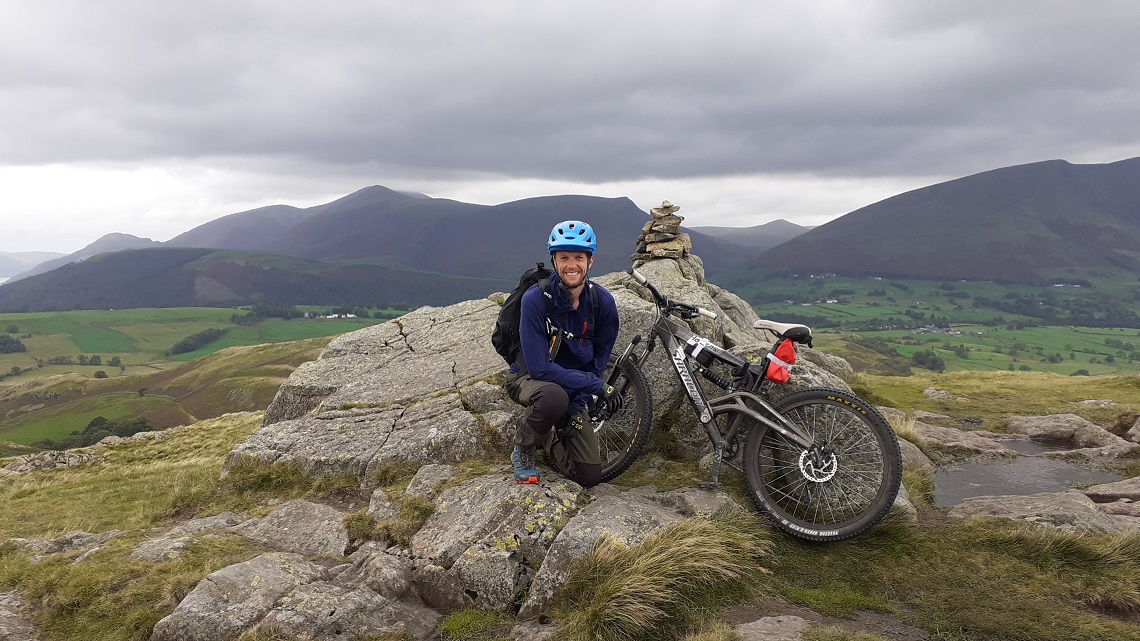
At any point I could have quit, but I was determined to make the most of my freedom. I knew this trip was going to be challenging. I knew it was going to be hard on my body and mind, but I welcomed the sufferance. The restrictions to my freedom had hit me hard during the first lockdown. I needed to push myself. I needed to throw caution to the wind and embrace the moment, no matter whether that moment was good or bad. At that point in time, just doing something different was hugely liberating.
By day 28 I’d completed 148 fells and had only a few in the North West and Northern region remaining. Those in the north were a different kind of challenge. There were very few shops where I could resupply, which meant I had to plan my food rationing with care. When I got it wrong, and I did near the end, I was forced to survive with whatever food I had available. On the third to last day, I was moving from Longlands Fell to Souther Fell bagging a further 11 fells en-route, making a total of 13 fells and a daily trip distance of 19 miles.
Owing to a miscalculation in planning, which I blame on fatigue, a desire to finish the trip, and the fact I was unfamiliar with that area of the Lake District, all I had to eat that day was a tin of tuna and a chocolate bar. I needed to clear the length of the Northern range so I could get to the other side, drop down from Blencathra and cycle back along the road into Keswick to resupply. It made for an extremely long and tiring day. I was moving painfully slowly across the hills and I had to concentrate on just putting one foot in front of the other. It was all I could do just to keep moving.
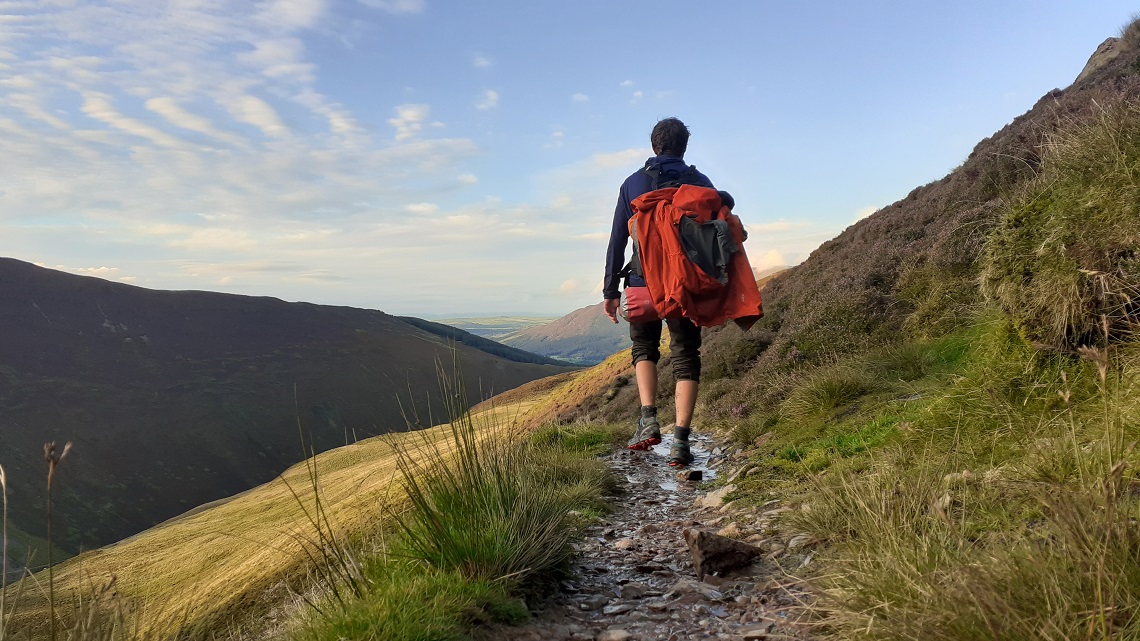
The final day was a relatively easy one. I was aiming to summit High Rigg before moving onto the final fell, Raven Crag (461m). Raven Crag is not an especially big or well-known fell, but it holds sentimental value, which made it the perfect final summit of my epic bikepacking expedition. In total, the trip took 36 days, just over 600miles, and over 48,000m of ascent. It had been tough; I’d cycled through every kind of weather imaginable, from bright sunshine to torrential downpours, freezing cold wind to thick suffocating mist.
I reached the final summit at 12:03 pm. I’d like to say that the views were amazing, but typical of the final few weeks, all I could see was a slight drizzle and thick cloud. I’d also like to say that upon completing my challenge, I was filled with an immediate sense of satisfaction, contentment, and joy — but I wasn’t.
It was only a few weeks later that the scale of what I’d achieved truly sank in, but at that moment, on the rain-soaked viewpoint at the top of Raven Crag with my dad standing beside me, I just felt relief that it was over.
WHO’S WRITING?
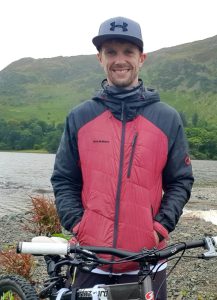 Daniel Wynn is a freelance writer, conservationist and adventurer. Squeezing adventures around his full-time job working in nature conservation, Dan proves it’s accessible to anyone. A firm advocate of the back-to-basics, human-powered trips, Dan’s other adventures include cycling 1,118 miles down Arctic Norway, paddling 110 miles around a tropical archipelago in Malaysia, and attempting a circumnavigation around Sicily covering 300 miles in 25days. Follow him on Instagram @danieljwynn.
Daniel Wynn is a freelance writer, conservationist and adventurer. Squeezing adventures around his full-time job working in nature conservation, Dan proves it’s accessible to anyone. A firm advocate of the back-to-basics, human-powered trips, Dan’s other adventures include cycling 1,118 miles down Arctic Norway, paddling 110 miles around a tropical archipelago in Malaysia, and attempting a circumnavigation around Sicily covering 300 miles in 25days. Follow him on Instagram @danieljwynn.


